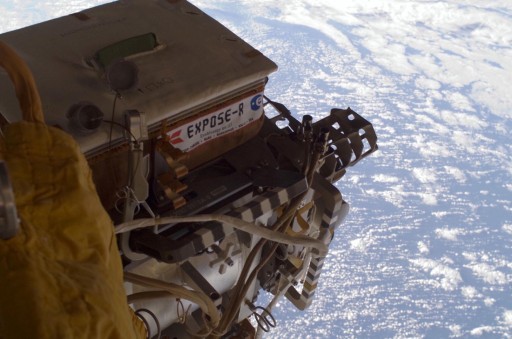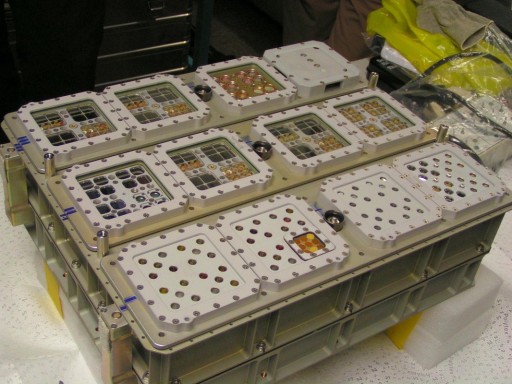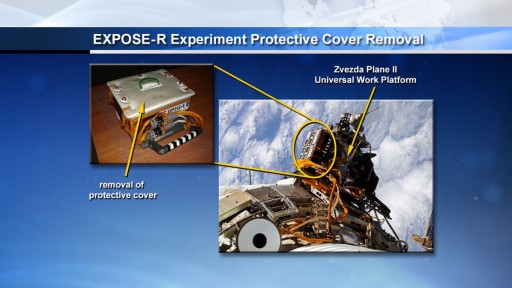EXPOSE-R

The EXPOSE payload platform was developed by the European Space Agency to conduct astrobiology studies by exposing samples and experiments to the space environment – mounting the platforms on the exterior of ISS for an extended period of time before retrieving them for return to Earth.
The effects of the space environment (increased UV exposure, cosmic radiation, microgravity, atomic oxygen, temperature variations) on organic matter and organisms have been heavily studied via space-based experiments and in ground-based laboratory simulations.
These studies are performed to better understand the role of interstellar, cometary and planetary chemistry with respect to prebiotic molecules leading to the formation and evolution of life on Earth, also assessing the possibility of its distribution in space. EXPOSE-R2 launched aboard Progress M-24M in July and will remain installed on URM-D II for up to 18 months. The experiment module hosts four experiments – BIOMEX, BOSS, PSS and Biochip

BIOMEX, the Biology and Mars Experiment, includes 12 different experiment packages that will help asses life’s potential on Mars. The various experiment chambers of BIOMEX are filled with different biomolecules and organisms that include bacteria, archaea, algae, fungi, lichens and mosses. The samples are subjected to a variety of different conditions – some are embedded in a simulated Martian soil with varying soil thicknesses, some chambers are filled with a gas mixture closely resembling the Martian atmosphere, and other samples are subjected to the space environment without protection. Filters are also being used to regulate the radiation levels, allowing scientists to simulate the solar radiation present on Mars and other locations.
The various BIOMEX samples are monitored with temperature sensors and radiation dosimeters in addition to other sensors that allow scientists insight into the conditions in the various experiment chambers. Data from BIOMEX will be used to determine what types of molecules and/or organisms can survive in Martian conditions to help with future missions to Mars dedicated to the study of organics.
Also, results from the experiment will be used for the definition of space-proven biosignatures. In a secondary objective, BIOMEX will assess extremophiles and their capabilities to survive in space and interact with minerals.

The BOSS study, Biofilm Organisms Surfing Space, will expose different microorganisms to the space environment, including Chroococcidiopsis and Deinococcus geothermalis, two strains of Cyanobacteria.
The experiment will look at the formation and characteristics of biofilms (extracellular polymeric substances) produced by the cells. There are hypotheses that organisms that produce biofilms will be more tolerant to space conditions compared to a single-celled plankton that does not produce biofilms. The formation of biofilms to battle the effects of radiation may play an important role in the preservation/evolution of life on extraterrestrial bodies and may have contributed to the formation of life on Earth.
PSS (Photochemistry on the Space Station) exposes different organic compounds to the space environment in their solid and gaseous forms. This will provide information about organic chemistry and the formation of prebiotic molecules in the space environment to gain insight into reactions triggered by radiation and their role in the production of prebiotic molecules. It will also provide more data on the effect of solar radiation on organics located on planets/small bodies without protective atmospheres.
The Biochip study exposes different biochip models to the cosmic radiation and extreme temperatures of space to assess their performance in an operational environment. It is hoped that biochips will be used in the future for the identification of biomolecules to study past or present extraterrestrial life.
